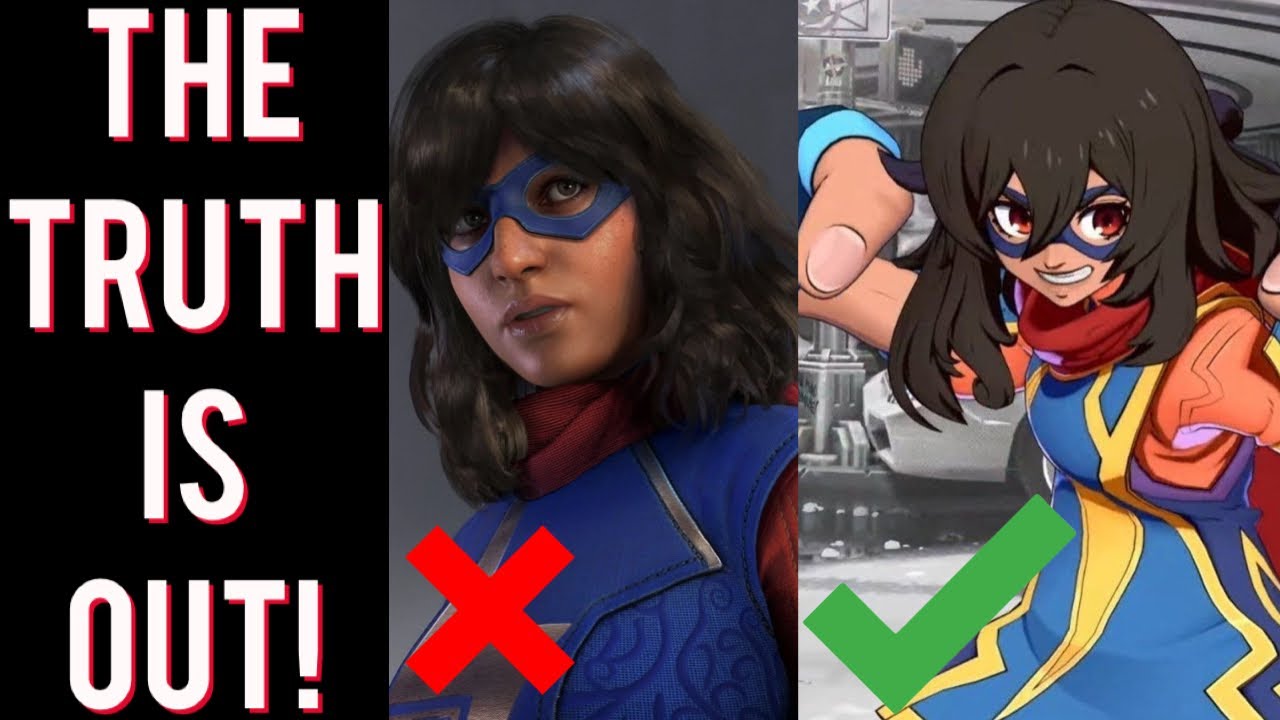Marvel Tōkon: Fighting Souls Hype: Japan’s Anime Edge Sparks Western Art Debate
The gaming world is buzzing with the recent announcement of Marvel Tōkon: Fighting Souls, a 4v4 tag-team fighting game developed by Japan’s Arc System Works, set to release in 2026 on PlayStation 5 and PC. Unveiled during Sony’s PlayStation State of Play in June 2025, the game has ignited excitement among fighting game fans and sparked a heated debate about the superiority of Japanese game development over Western efforts. Social media, particularly X, has amplified this sentiment, with some users proclaiming that Japan’s vibrant anime-inspired art exposes “lazy” Western artists. This article dives into the game’s reveal, its unique aesthetic, the cultural dynamics behind the controversy, and what it means for the global gaming industry.

The Reveal: A New Marvel Fighting Game
Marvel Tōkon: Fighting Souls marks a bold departure from the Marvel vs. Capcom series, which has long defined Marvel’s fighting game legacy. Unlike its predecessors, developed by Capcom, this title is helmed by Arc System Works, known for visually stunning anime-style fighters like Guilty Gear Strive, BlazBlue, and Dragon Ball FighterZ. The game features a roster of iconic Marvel characters, including Captain America, Iron Man, Spider-Man, Ms. Marvel, Star-Lord, Ghost Rider (Robbie Reyes), and Dr. Doom, with more expected to be revealed. Its 4v4 tag-team format, a first for Marvel fighting games, promises dynamic gameplay, with each character boasting bespoke attacks inspired by their comic book lore.
The reveal trailer, showcased at State of Play, stunned audiences with its vibrant, tokusatsu-inspired designs and fluid animations. Stages are packed with Easter eggs and feature multiple areas that transition strategically during matches, adding depth to the gameplay. Arc System Works has also introduced a system to make the 4v4 format accessible, ensuring players aren’t overwhelmed by the need to master multiple characters, unlike the steep learning curve of Ultimate Marvel vs. Capcom 3. This approach draws from their experience with Dragon Ball FighterZ, which balanced complexity with approachability.
The decision to partner with Arc System Works, rather than Capcom, surprised many. Fans had long anticipated a new Marvel vs. Capcom title, given the series’ cult following and the success of Marvel vs. Capcom: Infinite despite its mixed reception. On X, some expressed disappointment, mourning the apparent end of Capcom’s involvement, while others celebrated Arc System Works’ fresh take. The shift has fueled speculation about Marvel’s strategy to diversify its gaming portfolio, leveraging Japan’s expertise in the fighting game genre.
Japan’s Anime Aesthetic: A Visual Triumph
At the heart of the hype is Marvel Tōkon: Fighting Souls’ distinctive art style. Initially, the game was designed to be more faithful to Marvel’s comic book visuals, but Marvel encouraged Arc System Works to lean into their signature anime aesthetic. This decision has paid off visually, with characters like Iron Man and Ms. Marvel rendered in a striking, cel-shaded style that evokes Japanese anime and tokusatsu (live-action special effects shows like Power Rangers). The result is a game that feels both quintessentially Marvel and uniquely Japanese, setting it apart from Western-developed Marvel titles like Marvel’s Spider-Man or Marvel Rivals.
This aesthetic has drawn widespread praise. On platforms like Reddit, fans in communities like r/Fighters and r/Marvel have lauded the game’s “snazzy” designs and attention to detail, comparing it favorably to Guilty Gear Strive’s polished visuals. The game’s voice actors, all experienced in Japanese video games, further enhance its authenticity, grounding it in Japan’s gaming culture. For many, the art style represents a bold evolution of Marvel’s gaming presence, embracing a globalized approach that prioritizes creative freedom over Western comic book fidelity.
However, the praise has come with a controversial edge. On X, users have hailed Japan’s work as a rebuke to “lazy” Western artists, pointing to Marvel Tōkon’s vibrant visuals as evidence of superior craftsmanship. These sentiments often frame Western game art as sanitized or formulaic, lacking the passion and individuality of Japanese developers. While exaggerated, this narrative taps into a broader cultural debate about artistic priorities in gaming, with Japan’s output often romanticized for its bold, expressive style.
The “Lazy Western Artists” Controversy
The claim that Marvel Tōkon: Fighting Souls exposes “lazy” Western artists stems from a mix of fan passion and cultural stereotypes. Western game development, particularly in the AAA space, is often associated with photorealistic graphics and cinematic storytelling, as seen in titles like The Last of Us or Marvel’s Spider-Man. These games prioritize technical fidelity, often at the cost of stylized creativity, due to high budgets and market demands. In contrast, Japanese developers like Arc System Works are celebrated for their artistic risk-taking, crafting games that prioritize visual flair and mechanical depth over mainstream appeal.
This dichotomy has fueled a narrative that Western artists lack the dedication of their Japanese counterparts. On X, posts have highlighted Marvel Tōkon’s Ms. Marvel as an “improved” version of her Western-designed counterparts, with some users mocking Western developers for allegedly prioritizing diversity over quality. These claims oversimplify the issue, ignoring the systemic differences between the two industries. Japanese studios often operate with smaller teams and lower budgets, fostering a culture of creative freedom, while Western AAA studios face pressure to deliver broadly appealing, high-grossing titles.
The controversy also reflects broader tensions in gaming culture. The term “woke,” frequently used to criticize Western media for perceived pandering, has been weaponized in this debate, with some fans arguing that Marvel Tōkon succeeds by avoiding such pitfalls. Yet, the game’s diverse roster, including characters like Ms. Marvel and Robbie Reyes’ Ghost Rider, suggests that diversity isn’t the issue—execution is. Marvel Tōkon’s success lies in its confident art direction and gameplay innovation, not a rejection of progressive values.
Cultural and Industry Context
The hype around Marvel Tōkon: Fighting Souls builds on Japan’s storied history in the fighting game genre. Studios like Capcom, SNK, and Arc System Works have defined the genre with titles like Street Fighter, King of Fighters, and Guilty Gear, earning a loyal global fanbase. Japan’s influence extends beyond mechanics, with its anime and manga aesthetics shaping modern gaming culture. Dragon Ball FighterZ, developed by Arc System Works, is a prime example, blending faithful source material with stunning visuals and accessible gameplay, a formula Marvel Tōkon appears to emulate.
In contrast, Western fighting games, like Mortal Kombat or Injustice, often prioritize gritty realism or cinematic spectacle over stylized art. While successful, these titles lack the same cult following in the fighting game community (FGC), which values technical depth and visual distinctiveness. Marvel Tōkon’s announcement has thus been seen as a victory for the FGC, with fans excited for a Marvel game that aligns with Japanese sensibilities rather than Western AAA trends.
The debate also touches on historical perceptions of Japanese versus Western art. Japanese manga has outsold American comics in the West for years, with its diverse genres and accessible pricing appealing to a broad audience. Similarly, Japanese games like Persona and Elden Ring have garnered critical acclaim for their bold aesthetics, challenging the dominance of Western blockbusters. Marvel Tōkon’s anime style taps into this trend, positioning it as a cultural bridge between Marvel’s American roots and Japan’s global influence.
Implications for the Gaming Industry
Marvel Tōkon: Fighting Souls represents a strategic move by Marvel Games to diversify its portfolio. Recent successes like Marvel’s Spider-Man and Marvel Rivals have shown the potential of Marvel’s IP in gaming, but the fighting game genre offers a chance to tap into a niche yet passionate audience. By partnering with Arc System Works, Marvel is leveraging Japan’s expertise to elevate its brand, potentially setting a precedent for future collaborations.
For the industry, the game’s reception highlights the growing demand for stylized, creative games in an era dominated by photorealistic AAA titles. Arc System Works’ track record of robust post-launch support, as seen with Dragon Ball FighterZ’s expansion from 21 to 44 characters, suggests Marvel Tōkon will evolve over time, keeping players engaged. The game’s 2026 release gives developers time to refine its mechanics and roster, potentially including fan-favorites like Wolverine or Fantastic Four members.
The “lazy Western artists” narrative, while inflammatory, underscores a real tension: the need for Western studios to balance commercial pressures with artistic innovation. Games like Hades and Celeste prove that Western indie developers can rival Japan’s creativity, but AAA studios often lag in this regard. Marvel Tōkon’s success could inspire Western developers to take bigger risks, fostering a more diverse gaming landscape.
Conclusion
Marvel Tōkon: Fighting Souls is more than a fighting game; it’s a cultural flashpoint, celebrating Japan’s artistic prowess while exposing fault lines in gaming’s global ecosystem. Its anime-inspired visuals and innovative 4v4 gameplay have captivated fans, but the accompanying rhetoric about “lazy” Western artists reveals deeper industry divides. Rather than pitting East against West, the game’s hype should inspire a dialogue about creativity, execution, and the universal appeal of great art.
As Marvel Tōkon gears up for its 2026 launch, its impact will depend on Arc System Works’ ability to deliver a polished, engaging experience. For now, the excitement is palpable, and the debate it has sparked offers a chance to reflect on what makes gaming art truly exceptional. Fans and critics alike should look beyond the hyperbole and focus on the game itself—because if the trailer is any indication, it’s poised to be a knockout.





